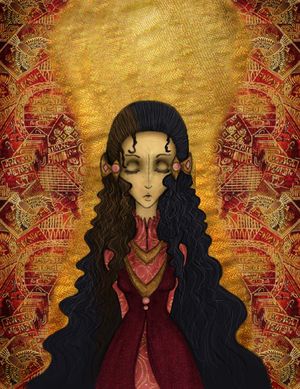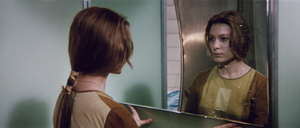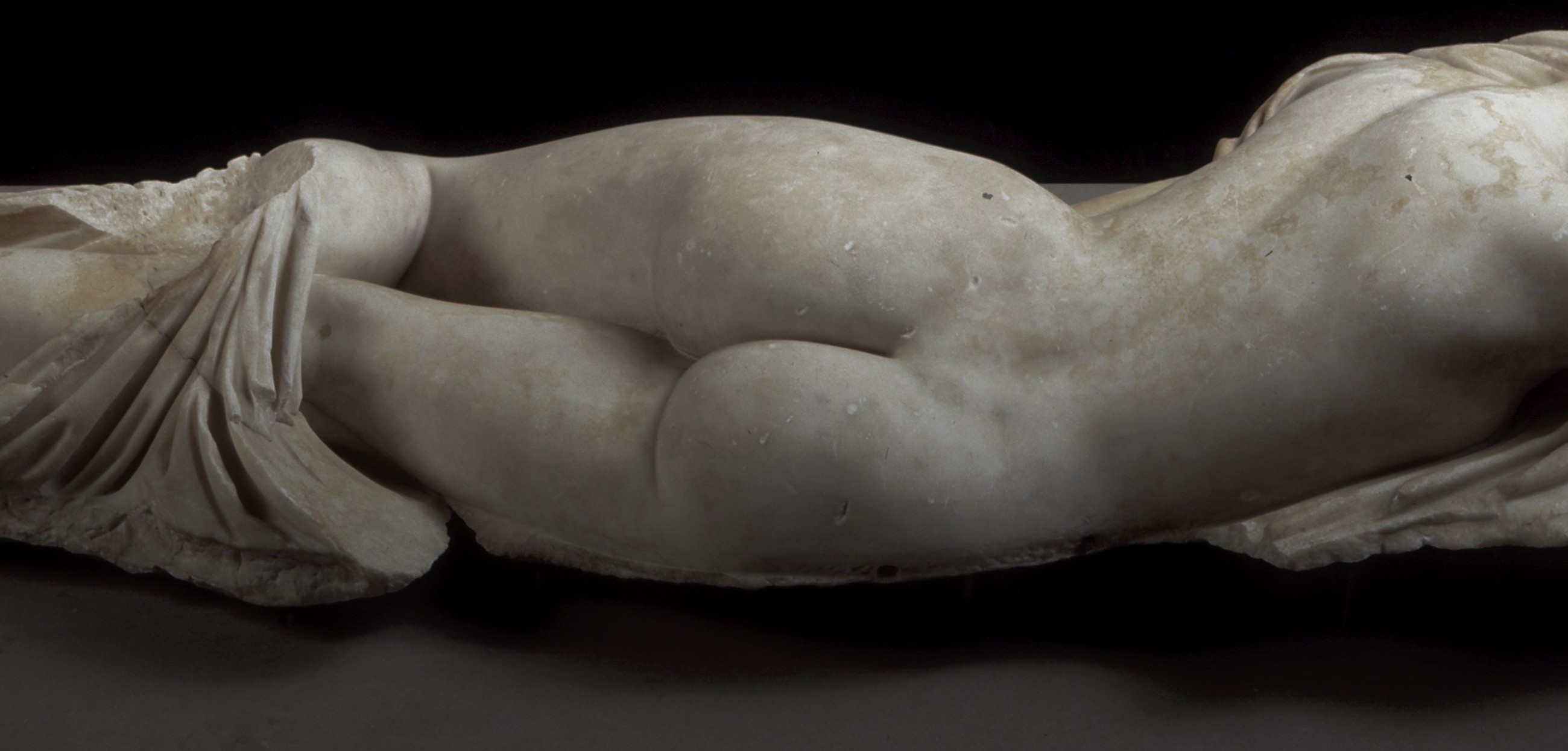TL;DR: An examination of misogyny and oppression in Ovid, Poe, and Lem.[1] |
| “ | Twisting and turning |
” |
| — The Red Hot Chili Peppers, “Breaking the Girl” | ||
In his Metamorphoses, Ovid is concerned with, among other things, images of woman and the men that love them. Perhaps that is a euphemistic way of saying: Ovid’s book of changes often features women as the victims of men’s desire. Ovid frequently and incisively examines how the desire of men, usually with the help of some divine force, change women, both physically and psychologically. Often, in tales like “Apollo and Daphne” and “Io and Jove,” women are broken in order to be made again, in an image that is more pliable to the desires of men.

In Book X, Ovid relates the story of Pygmalion. Ovid’s narrator here is Orpheus, but more on him in a minute. The story of Pygmalion and Galatea (who is not named in Ovid’s account) is often depicted in narratives since Ovid as a romantic tale of a lonely artist who falls in love with his perfect sculpture of a woman. The gods take pity on him, and turn his “ivory” women into flesh and blood — someone whom he can really love, marry, and live happily ever after with. Ostensibly, Ovid’s narrative is a happy one: the marriage of Pygmalion and Galatea is blessed by the gods with a child, a very real product of a real man and a real woman.
Yet, Ovid’s tales are seldom ever what they seem. Closer examination of “Pygmalian” reveals a more sinister story of misogyny, lust, fetishization, introversion, and sexual oppression. Pygmalion is the first-century equivalent of the loner, the socially ostracized man who resents the culture that marginalized him. Living by himself, he especially despises the women: he considers them whorish and is “disgusted by / the many sins to which the female mind / had been inclined by nature.” For Pygmalion, they are naturally flawed, probably because they want nothing to do with him, and by shunning him, they emasculate him. So, in what could probably be described as his skeevy little studio, he carves his idea of the perfect woman out of “ivory” — creating the perfection that does not exist in nature. His simulacrum is naked, of course, but he adorns it with shells and and ribbons, and rests the statue on his bed, between the covers, talks to it, kisses it. What a scene.
Pygmalion falls in love with his statue, so much so, he prays to Venus “if you can indeed grant all things, / then let me have the wife I want . . . / one like my ivory girl.” What follows is a grotesque fumbling and groping and poking and prodding of a now “more pliant” statue turned flesh and blood. He rejoices and continues
in his lusty explorations while
lifts up her timid eyes; she seeks the light;
The young girl feels these kisses; blushing, she
and even as she sees the sky, she sees
her lover.
She seeks “light,” perhaps an understanding of her situation beyond the rapacious form of Pygmalion towering over her. She becomes pregnant immediately. Pygmalion probably decides that he must impose his order on her, at least before she meets the emasculating women of Cyprus and is influenced by their natural propensities. So, in order for the Pygmalion creature to regain his manhood stolen by the these women, he must break their hold on him by making his own girl whom he can master.
Almost two millennia later, Edgar Allan Poe’s own Pygmalion figure, the narrator of “Ligeia,” attempts to assert his will over the nature of the story’s two women, the eponymous Ligeia and Rowena Trevanion of Tremaine. Yet, Poe’s narrator is, in a sense, an anti-Pygmalion figure, one who tries to control ostensibly through love (or lust) and hate, both of which he feels intensely — passionately. Like Pygmalion, Poe’s narrator is moody and introverted, prone to a fierce temper that his wife dreaded. He is also an opium addict, who “loathed [his wife] with a hatred belonging more to demon than to man.” After the death of his beloved Ligeia, the narrator marries Rowena, but longs to be reunited with the former, calling on her and hoping to “restore the departed Ligeia to the pathways she had abandoned upon the earth.”

The narrator’s will (desire, lust, passion) is so strong, that it seems to have a role in defeating nature. Yet, instead of just praying to Venus to have his love restored to him, he seems to sacrifice Rowena on the alter of his desire. She has bouts of illness and increasing irritability, like she’s becoming frightened of her husband; and who could blame her really: they live in the English countryside is an old gothic cathedral that seems to have a life of its own — an appropriate place for this horror story. Perhaps she realizes that the narrator is poisoning her wine, but becomes too weak to do anything about it. She eventually succumbs to the poison, or her illness, and dies as the narrator looks on. As the narrator watches, the corpse seems to move; this happens three times until it finally rises from its “bed of ebony.” To the narrator’s eyes, his dead wife Rowena seems to have risen from the dead as Ligeia.
Like “Pygmalion,” “Ligeia” has the inanimate become animate with the help of some external, divine power. Poe’s narrator, like Pygmalion, passionately longs for his vision of perfection to become flesh. His obsession with the dead Ligeia becomes an oppressive and violent force that literally kills Rowena — sacrificing her in lieu of the narrator’s vision of womanly perfection: Ligeia. The imperfect Rowena must be broken and recast in a form that our narrator sculpted from his own desire. “Ligeia,” a form that only now lives in the narrator’s mind, one that he has elevated above all other women, has replaced Rowena, literally and figuratively sacrificing her autonomous personality for the narrator’s oppressive desires.
Interestingly, too, Poe’s narrator calls Rowena his “wife,” but his relationship with Ligeia remains ambiguous. In fact, he seems to have doubts as to whether or not Ligeia even loved him. He alludes, too, to her passion, intelligence, and will as a match for his own. He fixates on her eyes: he says that they “delighted and appalled” him. Perhaps they both reflect his desire for her and her defiance of him, so much so, that in order to possess her completely, our narrator comes to the conclusion: “I saw that she must die.” These textual clues imply that Poe’s narrator kills Ligeia just as he later kills Rowena: if he cannot sculpt them into his vision of what a woman should be, then, as much as it might pain him, they would have to die. Ligeia’s return at the story’s end could be interpreted as her vampiric will defeating death, or psychologically as a manifestation of the narrator’s guilt and remorse as the ghastly form of Ligeia.
Stanislaw Lem’s 1961 novel Solaris, brings an aspect of Pygmalion into space and offers a science fiction (or perhaps a postcolonial) vocabulary with which to discuss it. In Lem’s novel, Kris Kelvin travels to the planet Solaris to find out what has happened to the crew — particularly why his friend Gibarian killed himself — while they were studying this seemingly alien oceanic intelligence. Similar to Moby-Dick, Solaris has a fairly simple plot interspersed with expository chapters about the history of “Solaristics”: the decades of academic studies about the enigmatic Solaris. Solaristics encompasses science, physics, philosophy, religion — any human intellectual attempt to figure out a world that is utterly alien. Kelvin is both a Solaricist and a psychologist, so he seems an appropriate person to send in order to help the crew.

Kelvin soon finds what’s troubling the denizens of Solaris Station: they have been getting “visitors” ever since they began bombarding the planet with x-rays. These visitors remain a mystery to Kelvin until he falls asleep his first night on the station and awakens to find his own: his dead wife Rheya has ostensibly appeared out of thin air. I’m reminded of Ligeia coming back from the dead; Kelvin is initially shocked, but quickly becomes enamored with and grows to love the Rheya-visitor.
She seems to have an irrational attachment to Kelvin, getting violently anxious if he tries to leave her. Kelvin eventually consults the other two scientists on the station, Snow and Sartorius, and they explain that the visitors seem to represent some sort of “psychic trauma” made manifest by Solaris. It’s as if the ocean probed their brains and made flesh that which is connected with primal feelings like trauma, passion, or desire — at least in Kelvin.
Rheya, Kelvin’s real wife, had killed herself years earlier when he left her after an argument. He dismissed her threat of suicide, but he is devastated when she actually does, carrying the guilt of his inaction with him to Solaris. The Rheya-visitor simultaneously represents his love for his dead wife and the guilt he has over her death. The intelligence that the men call Solaris has made the Rheya-visitor out of Kelvin’s memory of her, so his attachment to her is even more understandable: she is like the statue of Pygmalion, created out of the head of Kelvin and animated by some external force. The Rheya-visitor is even more perfect for Kelvin than the original ever was.

Yet, this Rheya simulacrum also has the flaws of the original, magnified by Kelvin’s psychic residue. The Rheya-visitor tries to kill herself several times, but is always resurrected by Solaris until the scientists develop a machine that disrupts their ability to return. The Rheya-visitor takes this opportunity to end her life for good, despite Kelvin’s multiple and emphatic pleas of his need and love for her. The irony is that the Rheya-visitor is created from his own memories of Rheya, but he ultimately remains ineffectual in his attempts to control her.
A recurrent theme in Solaris is first uttered by Snow, one of the resident scientists on Solaris station, when talking with Kelvin. Snow claims that humans explore the galaxy not to find the new, but because they “need mirrors” of themselves. Humans do not explore to find the new, but to impose the familiar: we are like immature, mad gods who attempt to create the universe in our own image. Lem seems to suggest that even our attempts at science, philosophy, and religion are ultimately to glorify our own presence in the universe, not about seeing the different. Solaris is about the impossibility of knowing the other. We make tenuous connections, but relationships seem to become battles of will: where one person’s will dominates and breaks (writes, determines) the other’s. So often, men assert their primacy through dominate ideologies, breaking the girl in order to remake her in an image of subordination and a reflection of the desires of men.
Unlike Ovid’s “Pygmalion,” Poe’s and Lem’s revisioning seem to carry with them more sinister implications. Both protagonists are haunted by the images of women they created, and neither seems to have the ability nor the will to escape. In a sense, they also become victims of their own desires. Granted, the women suffer more from these visions than the men, but the vision enslaves both.
Perhaps the latter two examples can again be linked with Ovid’s “Pygmalion” through its narrator Orpheus. Orpheus was the consummate musician: his music so lovely that it charmed death himself. After his wife, Eurydice, was killed by a serpent, Orpheus travelled to the Underworld to get her back. Hades and Persephone were so taken by his plea, they allowed Eurydice to return to the land of the living on the condition that he not look back as they make their way to the surface. He does — anxious that Eurydice might not be following — and she is snatched back into Hell. Ovid seems to comment ironically on love:ᅠ
Dying the second time, she could not say
a word of censure of her husband’s fault;
what had she to complain of — his great love?
Indeed, the Metamorphoses again reasserts what might be its central theme: the major cause of women’s suffering is the love of men. After losing Eurydice again, Orpheus becomes misogynistic, singing tales of women who do not follow the lead of men, like the women of Cyrus that Pygmalion so despised. Ironically, Orpheus sees the nature of women as the problem, not the men who try to break them.
Note
- ↑ Delivered at the PCA/ACA Conference, New Orleans, 2009

